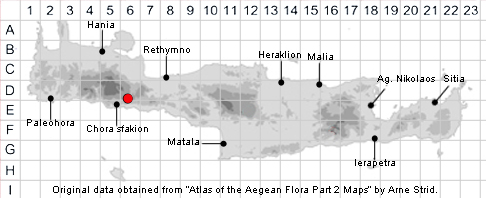PRUNUS CERASIFERA
Family and Genus:- See- ROSACEAE
Common Names:- None
Homotypic Synonyms:- None
Meaning:- Prunus The ancient Latin name for the plum tree.
Cerasifera (L) Bearing cherries.
General description:- Shrub or tree up to 8 m,
Branches:-
1) Numerous intricate, fine, sometimes spiny.
a) twigs, reddish-black to dark brown, glabrous. young twigs, glabrous and
glossy.
Leaves:-
1) 4-7 x 2-3·5 cm, oblong-obovate, cuneate at the base, regularly crenate or
appressed-serrate, glabrous and glossy above, pubescent on the veins beneath.
2) Petiole, 5-15 mm, usually pubescent.
Flowers:-
1) Mostly solitary, appearing with or slightly before the leaves.
2) Pedicel, c. 2-8(-20) mm, glabrous.
3) Petals, 8-10 mm, usually white.
Fruit:-
1) Drupe, 20-30 mm, globose, glabrous, red or yellow; endocarp subglobose,
keeled, smooth.
Key features:-
1) Leaves, regularly crenate, or serrate with inconspicuous teeth directed strongly
towards the apex.
2) Drupe, 20-30 mm,
Habitat:- Open woodland, rocky outcrops in meadows, gorges. 400-1400 m.
Distribution:- Scattered throughout Greece, but doubtfully native on the Aegean
islands, Balkan Peninsula and SW to C Asia, Very rare on Crete, known from only
one location (see map). This record certainly refers to subspontaneous material (1).
(1) Arne Strid (Atlas of the Aegean Flora, Part 2 Maps)
Flowering time:- Apr-May.
Photos by:- Courtesy of Wiki-Commons
SPECIES DESCRIPTION

